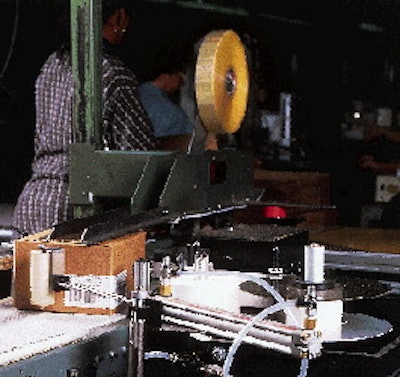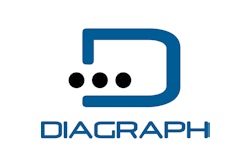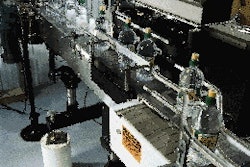Clock manufacturer General Time, based in Norcross, GA, has realized savings of $50ꯠ per year, mostly in labor, by installing four corner-wrap dual-panel case labelers in its Athens, GA, plant. The company had been applying preprinted bar-code labels by hand. But problems with skewed or incorrect labels led the company to investigate automatic dual-panel print/apply systems. The first of the four PA/4020 printer/applicators, all supplied by Diagraph (St. Louis, MO), was installed last summer. The labelers apply one 3"x8" label that's wrapped around the corner of the case, resulting in the appearance of two 3"x4" labels on adjacent panels. Cases contain anywhere from two to eight packaged clocks. The company's products are distributed throughout the U.S. and abroad, and are sold by mass merchants, large discount stores, drug chains and gift shops. Labeling saves labor Most of the $50ꯠ annual savings is labor: Application of labels on the packaging line eliminated the previous labor-intensive off-line operation. Knocked-down case blanks were hand-labeled before being manually erected. Automatic labeling also reduces the potential for mislabeling: "Often when our people were applying preprinted labels by hand, they would label too many boxes," says Ben Crawford, vp/plant manager. "So instead of 5ꯠ boxes being labeled, they might accidentally label 5꼀." That would mean costly relabeling of the extra 800. Labeling speeds, which average about five cases per minute, are the same. No more inventory Another problem associated with preprinted label inventory is incorrect labels being applied: "With hundreds of preprinted labels, it's very easy for someone who is not experienced to pick up the wrong label and put it on a box," says Crawford. By printing labels on-demand, General Time also eliminates the costs and headaches stemming from maintaining an extensive inventory of preprinted labels. Gone too are costs associated with obsolete labels. Each label contains an Interleaved 2-of-5 bar code, model name, model number, product color and case quantity. After filled cases exit the case taper, a photocell senses each box and triggers the printing of a label, which is then held by a vacuum tamp pad. The side portion of the pressure-sensitive label is actually adhered first. A white roller on an extension arm then extends across the front end of the case-even as the case is moving forward-to wipe down the front part of the label. The roller then retracts, allowing the case to continue down the conveyor. A final benefit of the labeler is accurate placement. "If you're sticking them on by hand, one label is generally a little high or low," says Crawford. "Now the labels are automatically printed and applied, and they go on straight." Why Diagraph? Says Crawford: "We looked at a number of options, and we felt they had the best equipment. We tried it and it worked for us, and the price was right."


























